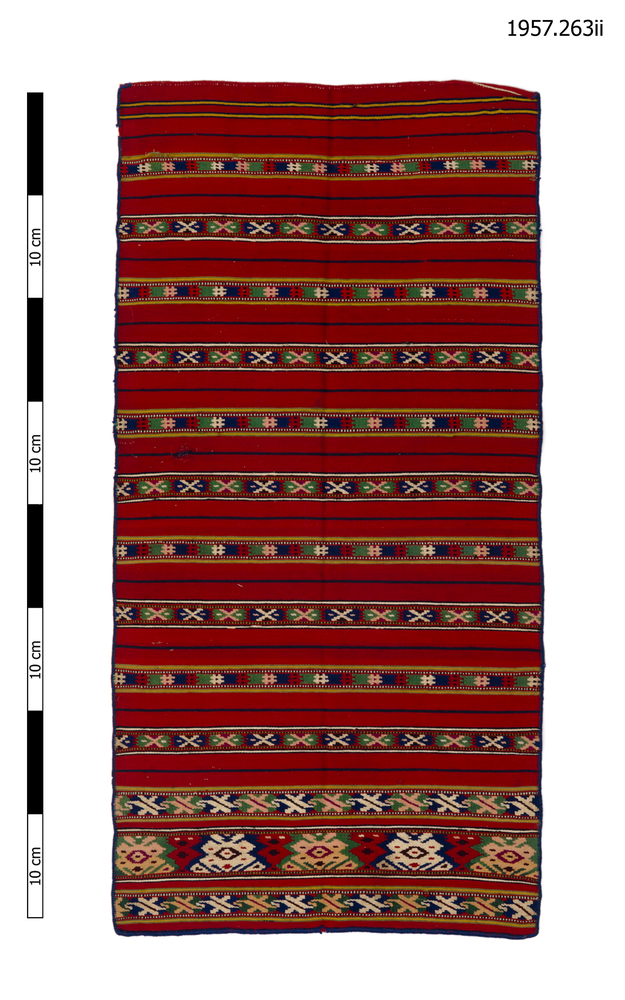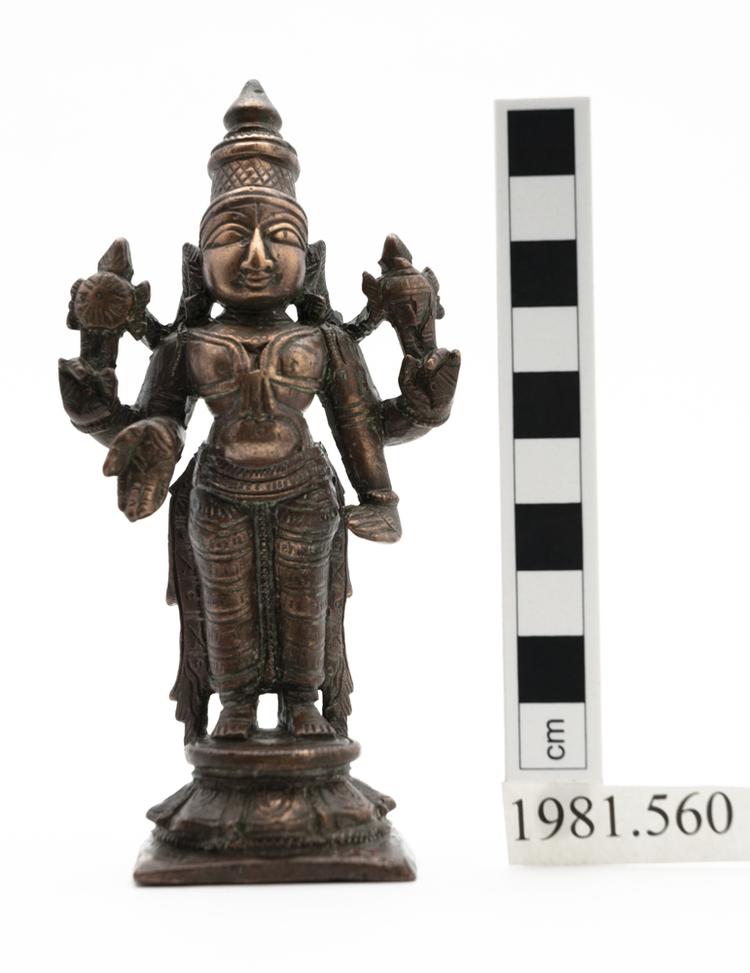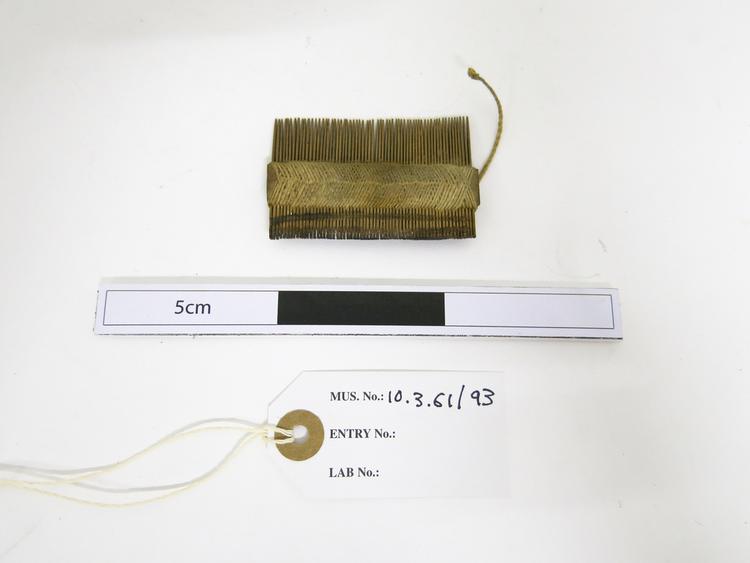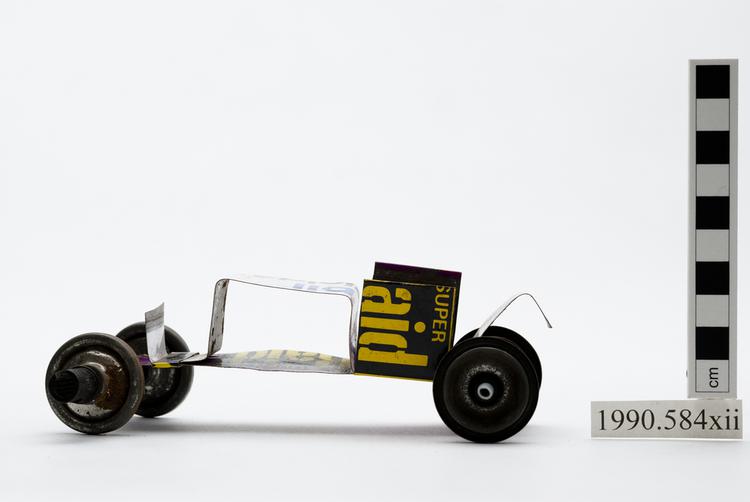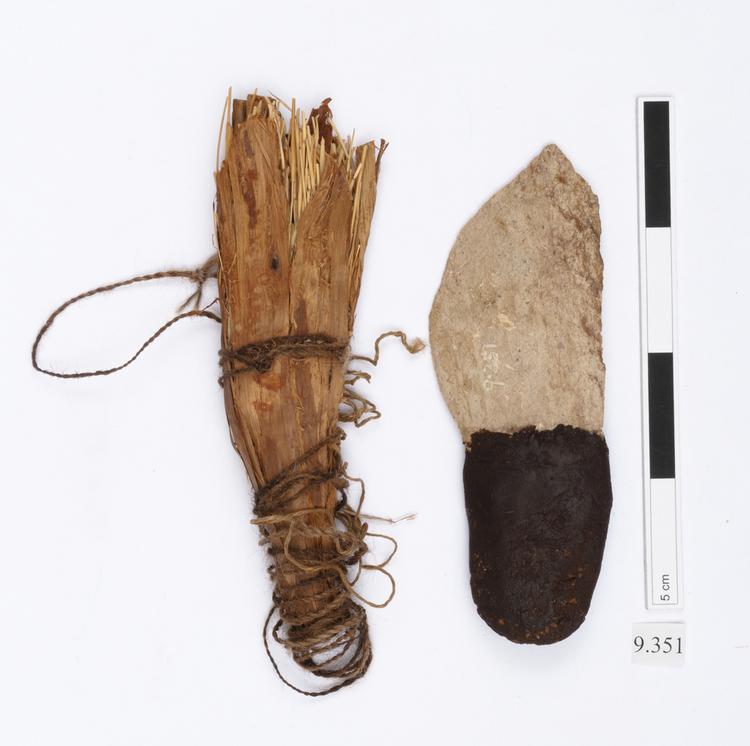
Stone (quartzite) bladed knife, haft of gum and bark sheath.
Quartzite Knife, Southern Aranda people, Northern Territory, Australia. This early 20th Century quartzite knife is typical of the kind of everyday tool used for millennia throughout northern and central Australia. Generally, an Aboriginal stone-worker produced a quartzite 'blade core' before attempting to make a blade, creating a worked cone of stone with a flat base. Once this was completed, the stone-worker could quickly strike the base and flake off several spear or knife blades one after another. Men usually made up their core and, having taken the blade they initially wanted, left it somewhere safe to come back to later. Although quartzite does not fracture with the kind of razor-sharp edges that you get if you make this kind of tool from obsidian, flint, glass or ceramic, it nevertheless produces a perfectly good cutting edge for most everyday tasks: skinning and butchering game, preparing fruit and vegetables, making finer woodcarvings. The gum handle, like the blade, was quickly and easily formed from materials widely available in the Central Desert around Charlotte Waters. The gum was extracted from Spinifex grass (Triodia spp.) by burning large quantities over a hole in the earth, where the resin accumulated and purified. While still warm, this blob of resin could be formed into any shape, and bonded strongly to both stone and textiles such as human hair or bark fibre. Once cool, it was amber-hard. Stone, resin. Early 20th Century. Purchased by Mr Patrick Byrne, telegraph operator of Charlotte Waters, and sold with other anthropological specimens to the Horniman Museum by Gerrard & Sons in 1909.
fighting



